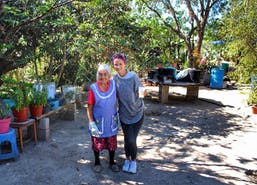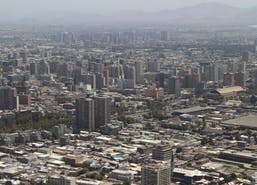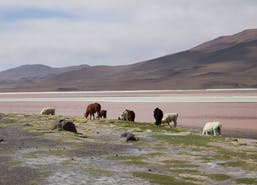Havana: An Old Way of Life
When I was younger, I hated old things. My immigrant parents had to make every hard-earned dollar go far: our apartment was entirely furnished with yard sale finds or free cast-offs found on the sidewalk, my clothes were mostly second-hand but of the non-stylish variety, I played with old toys and we drove old cars. I wanted new things so badly, even cheaply-made and ugly new things that were sold in the mall. Now that I’m older, I came around to seeing the value of old things. Old things have stories, old things do have style, old things are the counter-culture movement against the hyper-speed consumerism of today’s society. And, I realized after I visited Havana, old things are a way of life.


To say that Havana is like a time capsule from the 1950’s would be inaccurate because it did not feel as if time stood still–on the contrary, the passing of time was even more perceptible in the rusting cars and crumbling buildings. Havana is like a pair of Chucks, the more worn down with age it gets, the more stylish and beautiful it looks.

Some buildings and cars have new and bright paint jobs, helping to evoke the vibrant and rich city that Havana once was. But most of the buildings are covered in faded and flaking paint and balconies are decorated with drying laundry. It’s hard to picture these fancy old mansions in their former glory; they are now filled with the clamor of kids and everyday life of average Cubans. They remind me of an old house I once saw in Mexico where a tree was growing out through the door and when I peeked inside through the cracks, I saw that nature had completely taken over and that there was nothing left of the house except for its walls and facade. There is a bit of sadness in the sight, but the beauty of new life was breathtaking.

Perhaps no one takes greater pride in their old things than Cubans, especially in their cars. It’s still amazing to me that they are able to make those cars run on 60 year old parts. It’s almost more amazing after riding in one, like riding inside a rusted out steel cage with the foam poking out of the seat cushions, cringing as I hear the gears grind as they shift, and then miraculously, we were rolling forward in a cloud of exhaust fumes. All of these old cars are tricked out, featuring new radios with surprisingly powerful stereos that blast reggaeton music all over town. Riding in these cars forever cemented my impression of Cuba as a nation of resourceful, fun, music-loving, and friendly hustlers.

Yes, hustlers. But hustler is not a bad word. When we were walking around Havana, we were constantly approached by friendly Cubans who wanted to know where we’re from, but eventually the chit-chat would end with them offering us a taxi ride or trying to get us to go to a restaurant. But a few were just genuinely interested in getting to know us. It did bother me a little at first, but then I decided that a country full of hustlers is a good thing, because people are motivated to earn more money and do better. There is difference between poverty and misery. Misery is something that is horrible to see, where people are so beaten down that they’ve lost all hope. Cubans are poor, but they have spirit and happiness and a lot of pride in what they do have. That is heartening to see. So, keep hustlin’ compatriotas, keep hustlin’.




